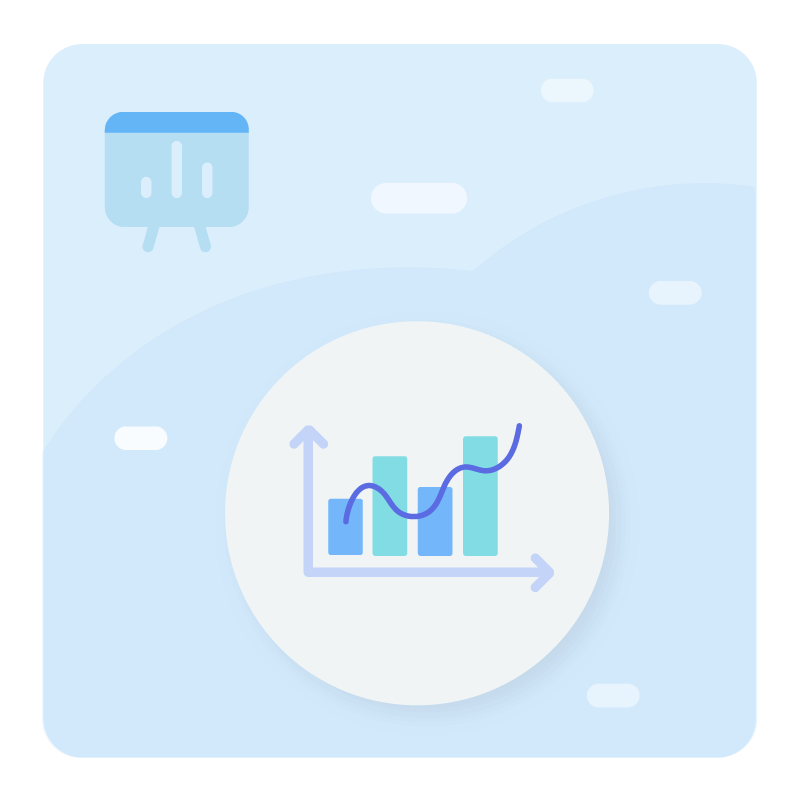Summary
- What is replaying a phone call?
- What you need for call replay
- How does call replay contribute to improving customer service quality?
- How to structure truly effective coaching sessions for customer service agents?
- Call replay and transcription: two complementary approaches
- Accelerate your agents' skill development
- The final word on call replay
- Call Replay FAQ
Replaying a phone call can prove very useful, whether to clarify a crucial detail, improve the quality of customer service, or keep a reliable record of a conversation. In a world where calls set the pace of professional interactions, knowing how to make use of these recordings becomes a real asset.
But how can you do this effectively while staying within legal boundaries? What tools should be prioritized to get the most out of this data without going overboard? Let's take a look at the available solutions, best practices, and precautions to know.
What is replaying a phone call?
Call replay refers to the act of replaying a previously recorded phone conversation.
Why replay phone calls?
It is commonly used in demanding professional environments — customer service centres, technical support departments, or even regulated sectors. This practice plays a key role in optimizing interactions and ensuring compliance with current standards.
Indeed, recording a call means capturing a moment of exchange in the form of an audio file. But it is not just a matter of archives.
These recordings allow for evaluating the quality of interactions, contribute to team training, and help resolve potential disputes. The recordings can even help detect trends in customer requests.
How do you replay phone calls?
Call replay can be done manually or automatically via specialized tools. Many VoIP phone systems and certain mobile applications already include recording functionalities, thereby allowing calls to be stored locally or in the cloud.
Some software, like Ringover, goes even further by offering automatic transcription, making analysis even more precise and actionable.
Call replay regulations
However, call recording and replay cannot be done without a legal framework. In the European Union, regulations such as the GDPR and the ePrivacy Regulation impose strict obligations: informing the parties involved, obtaining their consent, and ensuring secure data storage. Rules not to be taken lightly under penalty of sanctions… or serious complications. In the US, the laws vary from state to state. Generally speaking, it's best to get permission from your contact before you record them.

What you need for call replay
A good call replay software is not limited to a simple audio player: it must include features designed to optimize the use of recordings.
What are the essential features of high-performance call replay software?
Here are the key elements that make the difference:
- Call recording: The ability to automatically or manually record incoming and outgoing calls is essential. This function allows phone conversations to be captured and stored for later listening.
- Call transcription: Automatic transcription of calls into text is a valuable feature. It provides the ability to quickly read through the conversations' transcripts, helping to identify key moments and important information without having to listen to the entire recording.
- Integration with CRMs and management tools: Smooth integration with customer relationship management (CRM) systems and customer support tools is recommended. This allows direct access to recordings and transcripts from these platforms, thereby optimizing team coordination and efficiency.
- Advanced search system: Effective software must include advanced search tools to easily locate call recordings based on criteria such as date, agent, or keywords. This greatly simplifies the retrieval of necessary information.
- Call monitoring and call whisper coaching: Call monitoring and whisper coaching functionalities allow managers to supervise and guide agents in real time, which helps improve the quality of customer interactions.
- Analytics and detailed reports: Dashboards and detailed call reports are necessary to analyze team performance and identify areas for improvement. These analytical tools are essential for optimizing processes and improving customer satisfaction.
- Security and compliance: The software must ensure the security and confidentiality of recordings while complying with local and international data protection regulations. This includes secure file storage and strict management of authorized access.
How does call replay contribute to improving customer service quality?
When a manager reviews call recordings, they are not just listening to a sequence of dialogues. They pick up on nuances: a hesitation revealing a lack of confidence, a missed sales opportunity, a poorly delivered phrase that muddles the message. These are clues that help pinpoint the exact skills to improve.
Call replay: A valuable tool for detecting training needs
Instead of rolling out generic training sessions, call listening offers a more targeted approach: each agent can receive support tailored to their actual needs. A sales rep who struggles to close deals? They're offered refined sales closing techniques. A support agent who lacks clarity in explanations? The focus is on reformulation and active listening.
This process doesn't just identify and correct errors: it also highlights best practices. By showcasing particularly successful interactions, teams gain confidence and have concrete models to follow. The results speak for themselves: more efficient agents, better-supported customers, and ultimately, an upgraded customer service experience.
How to select calls to listen back to?
Not all calls are equal, and selecting which to review plays a determining role in performance analysis. Several approaches exist, each meeting specific goals.
1. Random sampling to get an overall view
This method is based on randomly drawing calls, without specific criteria. The benefit? Gaining a representative overview of interactions, without bias or excessive focus on certain cases. It allows for objective evaluation of service quality, though at the risk of missing specific issues.
2. Targeted sampling for a pragmatic approach
Instead of reviewing everything, calls are selected based on precise criteria: customer complaints, commercial transactions, interactions involving sensitive products… The goal is to analyze key situations to identify trends or concrete areas for improvement. An effective approach, though not always offering a complete picture.
3. Stratified sampling: the right balance
This method segments calls into different categories (by request type, service concerned, agent experience, etc.) before selecting a set number from each group. This way, you get a more refined analysis that ensures every aspect of customer service is assessed without any segment being under-represented.
Of course, there isn't just one way to proceed. Depending on the need — overall diagnosis or targeted correction — one or another of these methods will be most suitable. Often, a clever mix of the three enables a complete and relevant performance evaluation.
How to structure truly effective coaching sessions for customer service agents?
Well-designed coaching goes beyond passively listening to calls followed by a few general comments. It must be a concrete development lever, adapted to the agents' needs and aligned with the company's objectives. Here's how to make it truly impactful.
1. Establish structured and regular listening sessions
The effectiveness of coaching relies on consistency. Depending on the agents' experience and the stakes of the customer service function, it may be relevant to schedule weekly sessions for newcomers, while monthly follow-ups may suffice for more experienced agents. The key is to find the right pace — not too infrequent to avoid drift, not too frequent to prevent overload.
2. Select a varied sample of calls
Rather than analyzing only the longest interactions or problematic cases, it's better to adopt a more balanced approach. Mixing successful calls with more “delicate” ones provides a realistic view of the agent's skills while highlighting their strengths.
3. Use a clear yet flexible evaluation grid
A structured evaluation framework helps objectify performance analysis: quality of greeting, needs reformulation, objection handling, tone used… However, the grid shouldn't be so rigid that it masks subtler aspects like conversation flow or the ability to create a trusting environment.
4. Turn feedback into a driver of progress
A coaching session should never feel like a mere performance review. The goal is to involve the agent in their own development by letting them analyze their own calls, identify strengths, and determine areas for improvement. An open and constructive dialogue maximizes the impact of feedback and encourages proactive learning.
5. Highlight successes to boost motivation
Too often, coaching focuses only on what went wrong. Yet analyzing a particularly successful call and drawing out best practices can be just as beneficial. Emphasizing positive points not only rewards the agent but also sets benchmarks of excellence for the whole team.
When done well, coaching becomes a true development tool, where each session helps shape a more effective and more human customer service.
Call replay and transcription: two complementary approaches
Listening back to a call or reading its transcript? Behind this question lie two distinct methods that, when used effectively, form a powerful duo to optimize customer interaction management. One relies on attentive listening, capturing tone, hesitation, or emotion behind the words. The other supports fast and efficient analysis by offering immediate access to the exchanged information.
When artificial intelligence transforms call replay
Artificial intelligence no longer just transcribes conversations: it radically transforms how they are used. Thanks to natural language processing (NLP) and speech recognition algorithms, it is now possible to convert an audio recording into usable text.
But AI doesn't stop there. It improves transcription accuracy by accounting for accents, language nuances, and even the context of exchanges.
With the personalization offered by Empower (keywords, business jargon, language elements, etc.), you benefit from a more refined, faster, and above all more relevant analysis, whether for team training or improving customer service.
Conversational analysis: a strategic goldmine
Conversational analysis, powered by AI, detects, classifies, and interprets what is said... and how each conversation is conducted.
1. Understanding emotions and intentions
An annoyed customer? A hesitant prospect? AI is now capable of evaluating voice tone and detecting underlying emotions. A major asset to adjust responses or refine agent training.
2. Identifying trends and obstacles
Do certain topics frequently come up in conversations? Do specific objections hinder sales? By spotting recurring keywords and phrases, conversational analysis highlights trends that the human ear wouldn't pick up as quickly.
3. Optimizing the customer journey
The difficulties encountered by customers are not limited to calls. Sometimes, a poor experience on a website or a poorly designed ordering process results in an increase in complaints. By cross-referencing conversation data, it becomes possible to identify these irritants and address them.

4. Compliance and data security
Finally, AI also plays a key role in regulatory compliance. It can, for example, detect deviations from mandatory scripts or automatically anonymize sensitive information to avoid any violation of current regulations.
5. A revolution in progress
With these advancements, AI does not replace traditional call replay, but enriches and accelerates it. By combining these tools, companies have a 360° view of their customer interactions, allowing them to refine strategies and gain efficiency. A development which, when well mastered, turns every call into an opportunity for improvement.
Accelerate your agents' skill development
When talking about customer service improvement, two elements quickly stand out as crucial: the relevance of the discourse and the upskilling of agents. And for good reason, these aspects are the engines that increase not only customer satisfaction, but also the overall efficiency of the team. Let's see how to approach these challenges thoughtfully and methodically.
Adopt a positive posture and polished speech
A good agent is first and foremost someone who, even on the phone, manages to convey a positive attitude. Indeed, voice intonation, the use of optimistic vocabulary, and subtle management of body language — even remotely — are key elements to establishing a climate of trust.
The art of choosing the right words can be a real lever: for example, preferring “how can I help you?” over “what can I do for you?” can make all the difference.
A customer who feels listened to, respected and welcome is far more likely to develop loyalty. And if that customer goes through a call center or customer service department, this approach is often decisive in establishing the company's credibility.
Active listening: the key to mutual understanding
It's a classic, but a classic that never ages: active listening. Agents must absolutely ensure they understand the customer's concerns. Reformulating their words is one of the most effective methods to achieve this.
Not only does it show that we are listening attentively, but it also reassures the customer that they have been understood. For example, a reformulation such as “Let's go over the points you mentioned” not only clarifies but also strengthens the relationship. Because, let's be honest, who hasn't appreciated feeling truly listened to, rather than just “heard”?
Training and coaching: a winning duo
As with any profession, perfection comes with practice. And in the field of customer service, practice isn't limited to accumulated experience — it also relies on ongoing training.
It's about properly identifying agents' gaps, whether technical or behavioral, and implementing targeted actions to fill those gaps.
Beyond traditional training, coaching support is also essential. Setting up personalized action plans, best practice sheets, and regular follow-ups will help build an environment conducive to continuous improvement.
Call monitoring and analysis in the age of artificial intelligence
Artificial intelligence (AI) is becoming a valuable ally for customer service management. Using tools like Empower, managers can deeply analyze interactions, identify emerging trends, and obtain feedback on agent performance.
These technologies make it possible to automate part of the monitoring work while ensuring objective evaluations based on measurable criteria.
As a result, a more responsive service and faster problem resolution are achieved. But above all, these tools ensure regulatory compliance — which is not a luxury in a constantly evolving environment.
Encourage adaptability and problem-solving
Agents face a range of sometimes unexpected situations, where reactivity and the ability to quickly resolve a problem are key skills. This requires skillful management of uncertainty, knowing how to ask the right questions, and sometimes... daring to ask for help.
Flexibility becomes a major asset, especially in a constantly evolving world, where technological changes or global events can disrupt customer expectations and behaviors.
A team capable of adapting, identifying the most relevant solutions, and reacting quickly gains in efficiency. Indeed, the better an agent can adjust, the better they solve problems.
The final word on call replay
In summary, replaying calls allows you to train and evaluate agents, resolve disputes, identify trends, and improve customer service quality.
Solutions like Ringover and Empower by Ringover offer advanced features such as automatic transcription, sentiment analysis, keyword detection, and CRM system integration. These tools turn conversations into real growth opportunities for your business. To see for yourself, start your free trial today!
We encourage you to integrate these technologies into your communication strategy to improve your team's performance and offer a better customer experience. Don't delay adopting these innovative solutions and discover how call replay can become a lever for success in your business.
Call Replay FAQ
Can call replay be used as evidence in case of a dispute with a customer?
Absolutely. Replaying a call can clear up any ambiguity when a disagreement arises. A misunderstood commitment, a disputed contractual condition, a supposed promise... So many situations where having an authentic audio record makes all the difference.
A recording offers tangible proof of the exchanges and can clarify the facts, both in customer relations and in a legal framework. However, data protection regulations are strict.
Before any recording, the consent of the concerned parties is essential. The GDPR and CNIL strictly govern the use of these recordings, which must be justified and retained only for the duration necessary for their purpose.
Can a call be listened to in real time? How?
Yes, and it is a common practice in environments where the quality of phone interactions is strategic. Advanced telephony tools allow managers and supervisors to follow calls live through features such as dual-listening or whispering.
This means a supervisor can hear a conversation without the caller being aware, or even discreetly whisper advice to the agent without interrupting the exchange. A major advantage for continuous training and real-time performance improvement.
What legal obligations govern call replay, especially regarding personal data protection?
Recording and replaying calls are subject to a strict legal framework. Here are the fundamental points which will help you stay compliant in most regions:
- Explicit consent: It is impossible to record a call without all parties being informed and having given their consent.
- Legitimate justification: The recording must meet a clear need, such as contract execution, regulatory compliance, or protection of the parties' interests.
- Limited retention period: A recording cannot be stored indefinitely. The retention period must be proportionate to its purpose, often ranging from a few months to five years.
- Restricted access: Only authorized persons may consult these recordings, and the individuals concerned must be able to exercise their right of access.
How to use call recordings to optimize agent coaching?
Companies that focus on the quality of their customer relationship have every interest in using call recordings as a training lever. Here are some best practices:
- Performance analysis: Regular listening makes it possible to identify agent strengths and areas for improvement.
- Constructive feedback: Rather than relying on feelings, managers can concretely illustrate their recommendations with call excerpts.
- Targeted training programs: Recordings help design modules tailored to specific issues: objection handling, tone improvement, reduction of unproductive silences...
- Highlighting best practices: A perfectly handled call can serve as an inspiring example for the entire team.
Published on May 5, 2025.




